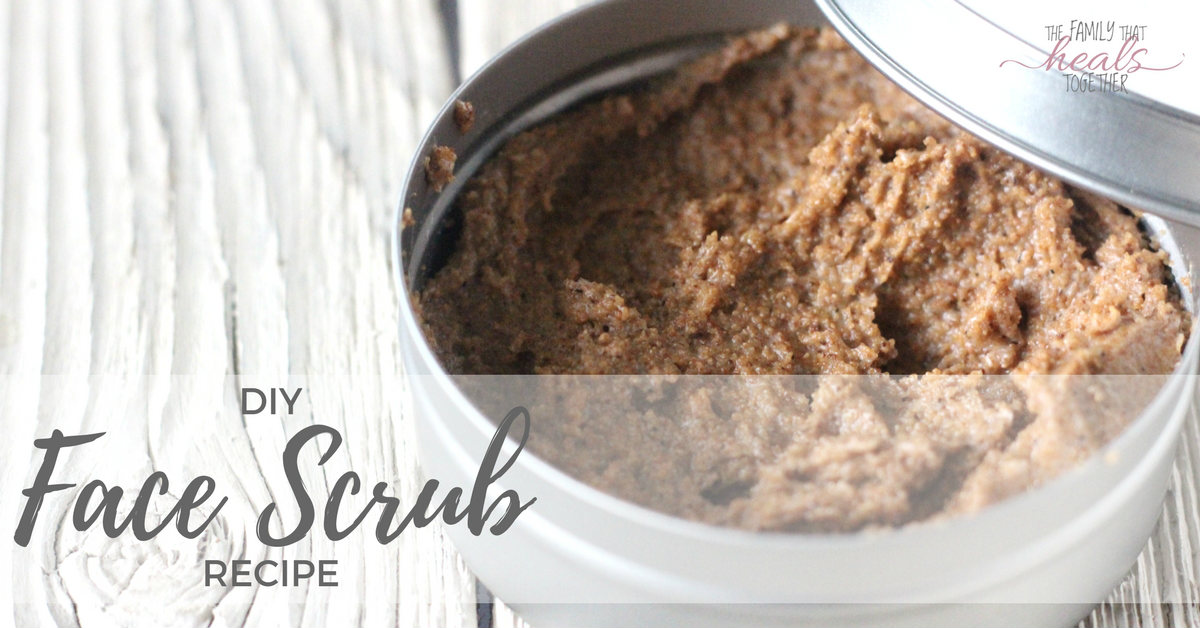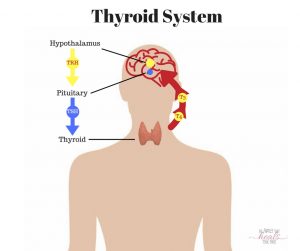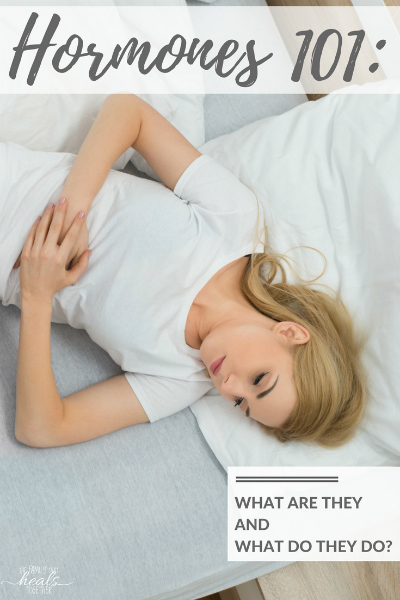
In our ongoing series on women’s hormones from Krista Goncalves, BSc, CHN, RNC, we’ve learned about how hormones function, as well as what happens when they don’t function well. Today, Krista’s telling us about the hidden substances (called xenoestrogens) we encounter daily that could be wrecking our hormones- and how to avoid them. -Jaclyn
We’re going to lay out all the ways we can “detox” our diet, personal environment, and lifestyle for better hormonal health, more energy, better sleep, and, of course, to rediscover your optimal weight- just by dumping some toxic beauty baggage.
What are xenoestrogens?
The National Institute of Environmental Health Science (NIEHS) explains,
Endocrine disruptors are chemicals that may interfere with the body’s endocrine system and produce adverse developmental, reproductive, neurological and immune effects in both humans and wildlife. The damage is believed to be most severe during prenatal or early pregnancy exposure.
Xenoestrogens, more specifically, are types of synthetic endocrine-disrupting chemicals that mimic the “bad estrogens” in our bodies which then negatively impact our hormonal balance overall.
What impact do xenoestrogens have on our health & our hormones?
As we learned recently, when our hormones are out of whack, we start to feel chronically tired, moody, irritable, brain-fogged, and experience sore joints, hair loss, dry skin, and weight loss resistance, leaving us feeling just plain un-sexy!
When we’re routinely exposed to hormone disruptors, they fool our bodies into believing xenoestrogens are our own estrogens, which then cause a number of imbalances.
These fake estrogens may be one of the main reasons why you’re feeling some hormonal disharmony.
Additionally, xenoestrogens are certainly one of the primary causes of a specific type of imbalance called Estrogen Dominance, which we’ll be talking about in the next post in our hormone article series.
According to the NIEHS, endocrine disruptors have the ability to cause damage in three ways:
- They mimic naturally-occurring hormones in the body like estrogens, androgens (like testosterone), and thyroid hormones, potentially producing over-stimulation.
- They bind to a receptor within a cell and block the correct hormone from binding. The normal signal then fails to occur and the body does not respond properly.
- They interfere with the way natural hormones or their receptors are made or controlled, for example, by altering their metabolism in the liver.
Because they are not biodegradable and are stored in our fat cells, xenoestrogens can build up rather easily and have been indicated in many serious health conditions, including: breast, prostate and testicular cancer, diabetes, infertility, endometriosis, early-onset puberty, miscarriages, and obesity- these chemicals are often referred to as ‘obesogens’. (source)
Not your grandparents’ hormone disruptors
It’s no surprise that the world has changed dramatically in the last 50 years, not only with major technological advances, but in our environment too- and not for the better!
We’re inundated with a multitude of toxins and pollution on a daily basis, whereas our grandparents, even our parents to some extent, weren’t bombarded with this vast array of chemicals in their everyday lives.
It’s also a fact that it only takes a rather small amount of xenoestrogen exposure to inflict a negative response. According to Dr. Axe,
Our hormonal systems are so delicate that even tiny exposures to endocrine-disrupting chemicals at key points of development could set us up for disease later in life. We’re talking exposures measured in the parts per billion. To put that into context, it’s like one drop in 20 Olympic-sized swimming pools.
Sources of endocrine disruptors
Here’s what to watch out for as possible sources of endocrine disruptors:
- lining of cans (BPA)
- plastics- food storage containers, plastic bags, & drink bottles
- fragrances & perfumes
- detergents & other cleaning products
- shampoo & hair products
- soaps & other bath products, especially stuff that bubbles!
- pesticides & conventional produce
- herbicides
- dryer sheets & dry cleaning chemicals
- bleached feminine hygiene products
- makeup (choose safer makeup here)
- tap water
- the inside of microwave popcorn bags
- children’s pajamas (fire retardants)
- store receipts
- sunscreen
How do we rid ourselves of endocrine disruptors & xenoestrogens?
We start with the things we can control in our “personal environment.” This means taking a hard look at our purchasing choices. In addition to the items listed above, look through your kitchen & bathroom cupboards and see how many big brand name products you have.
Now take a look at the ingredient lists of your bath, beauty, & cleaning products, then replace toxic items with safer products.
Endocrine-disrupting chemical names to be aware of:
- BPA (bisphenol-A)
- fragrance or parfum- look for essential oils instead
- parabens
- triclosan
- sulfates & derivatives
- phthalates
- dioxins
- ureas
- atrazine
- perchlorate
- pfcs (perfluorinated chemicals like PFOAs found in non-stick pans)
- organophosphate pesticides
- glycol ethers, propylene glycol
- petrolatum, mineral oil & paraffin wax
- DMDM hydantoin, or methenamine and quaternium-15
- Diethanolamine (DEA), Triethanolamine (TEA), Monoethanolamine(MEA)
Unfortunately, that’s just a short list! (Jaclyn’s tip: shop safer beauty products that don’t contain these or other toxic chemicals here.)
Other ways to ditch the dirt & detox the fake estrogens
- use glass containers whenever possible, and never microwave food in plastic or using plastic wrap to cover it
- ditch the plastic everywhere possible (Related: plastic-free coffeemakers.)
- replace your non-stick cookware with alternatives like Teflon free cookware: cast iron, stainless steel, or ceramic cookware (Another good option? Silcone! Read more: is silicone safe for baking?)
- make your own non-toxic cleaning products- DIY is the new clean, baby! (Jaclyn’s tip: I combine water, a squirt of castile soap, and germ-fighting essential oils in a spray bottle for a cheap and simple all-purpose cleaner.)
- make your own natural beauty & bath products
- rethink your birth control- still taking the pill? Time to discuss alternatives with your partner and health practitioner.
- eat more detoxifying foods like green tea, chia seeds, turmeric, and leafy green veggies- specifically cruciferous vegetables like broccoli, cauliflower, kale, collard greens, and Brussels sprouts. Gently steam and serve them with a bit of good fat like virgin coconut oil or ghee to get the most nutrients out of them.
And lastly, here’s one most people don’t give a second thought about: take off your footwear as soon as you enter your house. You would be shocked at what attaches itself to your shoes!
How to maintain a “xeno-free” lifestyle
Think about it this way- if something is absolutely toxic to ingest, why would you want to put it on your face or your hair, or clean your house (where your children play) with it?
✔ DIY products are the best choice to be xeno-free, and can be a fun family activity. (Jaclyn’s note: my boys love making our homemade magnesium lotion with me.)
Most beauty products are hype & marketing. The kitchen cupboard is often more effective than the drugstore. – Amanda Cook, Author of “Wellpreneur“
✔ If not doing DIY, choose more natural products for your bath, beauty & cleaning product purchases. Shop safer beauty products here.
✔ Buy mostly organic or grow your own organic produce.
✔ Choose fresh or frozen over canned foods.
✔ Choose wild-caught seafood and avoid high-mercury fish.
✔ Drink filtered water and don’t buy plastic water bottles. It needs to be said again- just avoid plastic! (Read: why filtering your water is important.)
✔ Be fragrance free. Did you know that a scent which lasts longer than 15 minutes may actually be toxic to your reproductive system because of the phthalate content?
Does someone you know need this important information about endocrine disruptors & xenoestrogens? Please share!









